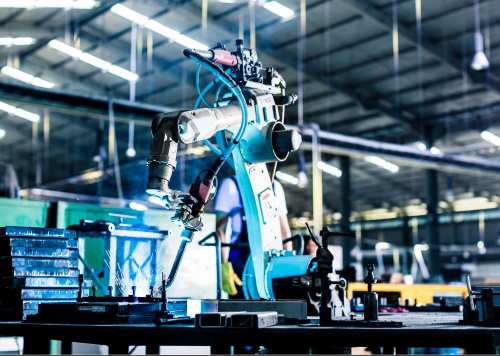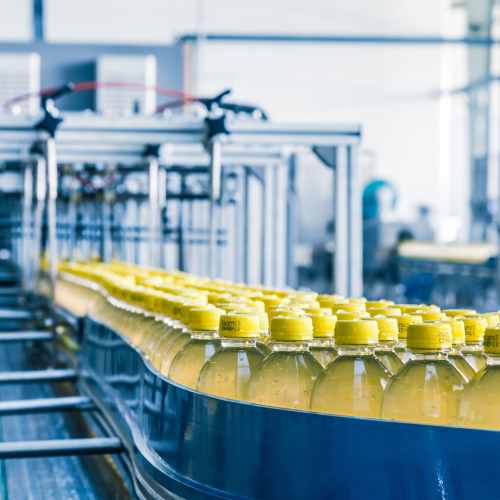The second generation (2G) networks allowed us to send text messages, 3G provided faster access to the internet and 4G enabled uninterrupted streaming.
Now, 5G networks are set to transform our lives again.
As the possibilities for 5G become clearer for industrial applications, how can food and beverage manufacturers benefit from the development?
Asia Pacific is leading the way to becoming the first region to fully integrate 5G.
Countries such as China, Japan and South Korea are currently outspending the US in building and investing in 5G networks.
For instance, China’s need to embrace wireless communications means that the country has already spent US$24 billion more than the US, developing 350,000 new communication infrastructure sites.
With a manufacturing output equal to 20% of global production, it is no wonder that China is eager to win the 5G race.
The benefits of 5G
Manufacturing runs on a tight schedule and problems or delays in production can be detrimental.
Margins are squeezed more than ever as the food and beverage industry faces constant changes in food trends and consumer attitudes.
Products are becoming increasingly varied, customized and complex to produce and manufacturers must take note of the potential that 5G can offer.
All facilities need to receive and transmit vast amounts of data to keep their processes running—and fast.
Next generation 5G networks can be 100 times faster than 4G, making data processing and communication between devices and servers much faster and with more power.
This opens up a wealth of possibilities for food and beverage manufacturing, helping the industry to increase its competitiveness, output and efficiency.
Firstly, 5G is supported by ultra-reliable and low-latency communication (URLLC) meaning that machines have greater roaming power.
With a low latency of around 10 milliseconds, compared to 20-30 milliseconds with 4G, equipment can be monitored in real time by staff.
With plans to reduce this latency to as little as one millisecond, the factory floor will receive updates on machinery and production output almost instantaneously.
Secondly, manufacturing robotics and automation will greatly improve with 5G, allowing for greater efficiency and accuracy.
5G’s increased speed and low latency mean that there is enhanced communication between technologies such as robotics, augmented reality and virtual reality.
For example, 5G is able to handle more complex data transmissions, such as cloud robotics, where the cloud’s processing is relevant for the immediate action of the robot. In combination with the cloud’s almost limitless processing and data storage, 5G communications will allow manufacturing robots to exchange large amounts of information between themselves and the factory workforce.
Furthermore, most robots are tethered to a wired system.
This is because the wireless connectivity required for cloud computing has not been available—until now.
5G will allow robots to roam free, untethered and totally wireless.
Better still, instant wireless communication will speed up robot reaction times, reducing the risk of worker injury or collision with other equipment, ultimately increasing production.
Reducing maintenance
Similarly, 5G can enhance predictive maintenance–a major cost for food and beverage manufacturers.
Machine break down can have adverse effects on production and can cost anything from thousands to millions of dollars in downtime.
5G-powered predictive maintenance could prevent failures before they happen.
Imagine a machine’s temperature is rising at an alarming rate.
Seconds later, the equipment overheats and causes thousands of dollars’ worth of damage and wasted product.
By the time a replacement has been ordered, delivered and installed, production is down, and profitability has taken a huge hit.
Consider the outcome if sensors were added onto equipment for machine health monitoring.
With ultra-low latency 5G, potential threats can be identified and fixed before they turn into production-stopping problems.
This is particularly important for the food and beverage industry as products that have been damaged or affected from machine breakdown must be disposed.
For example, food and beverage facilities must work time sensitively and workers must be quick to dispose of product that is left on the production line unattended, otherwise there is greater risk of contamination.
For this reason, production in a food and beverage facility is unable to continue work once there has been breakdown and the process must start again.
If 5G was implemented, there is the potential to reduce waste and damaged goods, as the speed from 5G means that the turnaround from breakdown to completion of maintenance would be much quicker or could be prevented altogether.
Tracing food with 5G
From enhancing operations, processing and production of a factory floor, 5G can also be used to give insight into food after it leaves the factory, by improving traceability.
Food traceability initiatives aim to combat six key factors relatable to food traceability; food safety and recalls, food fraud, regulatory compliance, social issues, sustainability and consumer information.
5G has the ability to connect with many low-power devices, which provides the potential to enable dynamic, end-to-end food traceability.
This means food manufacturers can track and trace their produce to a higher degree, allowing the food industry to become better equipped at using technology, such as blockchain.
Blockchain is a form of unique distributed ledger technology (DLT) that is shared between independent computers.
The DLT holds time-stamped, unchangeable records, which cannot be altered unless they are agreed by all other supply chain users, which prevents records from being tampered with.
Combined, 5G and blockchain are predicted to provide the food industry with more transparency and better traceability of products.
By using blockchain technology, food manufacturers can increase their accountability and accuracy of tracing products and can manage valuable data more efficiently.
For example, in the event of foodborne illnesses caused by contamination, manufacturers can trace back to the exact point in the supply chain contamination occurred.
On the other hand, blockchain can also be used as a potential solution to combat food fraud, which creates a trail of data that’s used to document traceability to help investigate food fraud.
5G obstacles
Although 5G offers a number of benefits to the food and beverage sector, there are problems that must be considered, such as security.
The mass of data speeds from 5G means that a cyber-attack could potentially happen faster, leading to a higher volume of data that could be breached as a result.
This puts numerous plant devices at risk if appropriate procedures are not implemented to mitigate these security risks.
With Asia heading to become the first nation to fully integrate 5G, it is a good time for manufacturers to review security precautions to protect facility data.
Cyber security must be considered in order to protect manufacturing facilities.
A cyber-attack could be detrimental if the correct precautions are not considered, which could result in loss of vital data, produce and money and potentially threatening the entire lifespan of the facility.
Another problem of 5G network is poor cell signal.
Building materials that make up the factory space, such as concrete, brick and steel, can disrupt communication signals from penetrating the interior of manufacturing structures.
This can limit the amount of connectivity on networks, which can impact processing and production.
As frequencies for 5G increase, this becomes a greater problem.
Is the industry ready?
With the 5G market in Asia-Pacific estimated to be worth around US$64 billion by 2025, demonstrates the readiness of manufacturing sectors in Asia Pacific, including food and beverage.
5G will allow food and beverage facilities to run on fast, reliable, real-time insights of every aspect of the working environment, from factory floor, to production line.
Technology will rely on 5G connectivity to increase operations, productivity, efficiency and costs.
For manufacturers that are not prepared for a heightened network change, they must seek to do so, otherwise risk losing their competitiveness in the industry.
5G has the overall potential to transform the food and beverage industry.
From enhancing technology performance and predictive maintenance, to more accurate food traceability, 5G offers a wealth of benefits.
Manufacturers in Asia Pacific must step on board with the new infrastructure to ensure seamless, efficient operations and processing of their facilities.
Failure to implement could raise problems before the network is even installed.
Story by John Young, APAC director, EU Automation.













